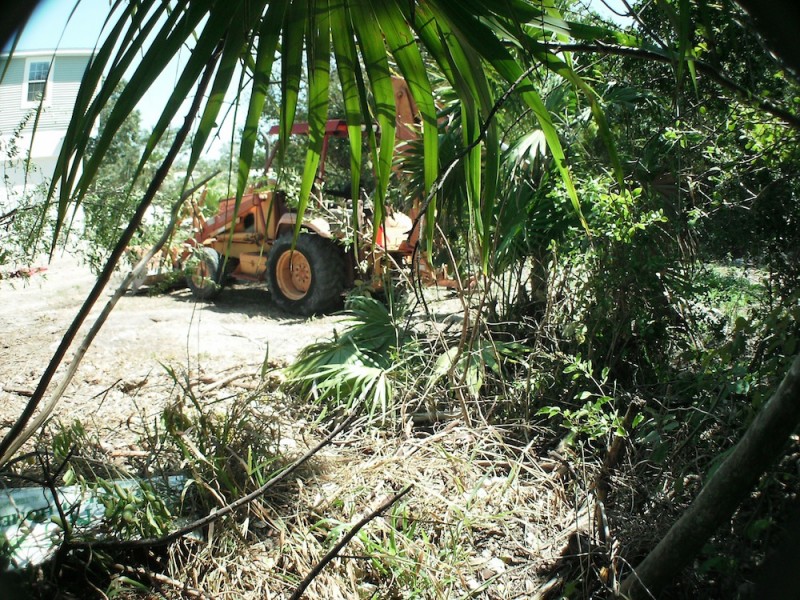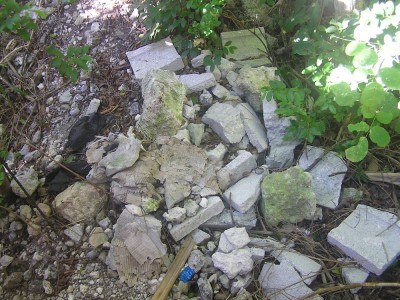Shame on Marathon
When an ordinary person knowingly violates a city’s code that’s an issue between that individual and the city. It isn’t news.
When someone who is running for Marathon city council flagrantly violates the code it is news. That “someone” is Mark Senmartin and his case is illustrative of both the failure of government and the local media that should be the eyes and ears of the public.
In March of this year, Senmartin began constructing a manufactured home on Bluefin Drive in Marathon. That was the beginning of what became a contentious saga.
According to his neighbor David Rasmussen, Senmartin
“took a backhoe and cleared his entire lot and pushed it five feet into my lot. He pushed over a 35-year-old thatch palm and killed it. He dumped a bunch of concrete into my yard.”
Senmartin’s yard had been a hardwood hammock, full of native trees. Harry DeLashmutt, who had been a biologist for the Department of Community Affairs of the state of Florida and who later trained the City of Marathon’s first biologist Wendy Dyer, reported that he had seen the lot in 2000 and that “you couldn’t see through the trees because there were so many.”
On March 31 Rasmussen took action.
“I drove over to [Marathon city mayor] Mike Cinque’s house and he came over and walked up through my yard, saw what the guy was doing and called [city planner] George Garrett,” Rasmussen said.
Garrett acts as biologist for the city.
“He also came over, went right by the site and indicated that he didn’t see that he [Senmartin] was doing anything wrong.”
Eventually Garrett entered Senmartin’s yard and discovered that he had a dumpster full of thatch palms and pigeon plums. Cinque, who told us that he was just responding to a citizen complaint, indicated that he was concerned because Senmartin was doing the work on a Saturday and had two dumpsters full of native trees.
“Garrett didn’t bother to write anything down, didn’t take anything as evidence,” Rasmussan said. “I paid Harry DeLashmutt to come over the day after it happened to document some of it. He wrote down a list of half a dozen trees that he could tell from the stumps. He was just blown away. He could not fathom what was going on over there.”
DeLashmutt, who now operates Biosurveys, Inc. confirmed what Rasmussen said.
In an email he wrote,
“Attached are select photos of the clearing. Note the fill and gravel brought in to cover the stumps and roots. The Perszyk parcel was immediately adjacent to the Senmartin lots and this parcel too had debris pushed onto and encroachment along its property line which was common to that of the Senmartin property.”
DeLashmutt said he saw native hammock species such as pigeon plum, Spanish stopper, gumbo limbo, and Jamaica caper re-sprouting from damaged stumps and root systems.
Files Public Records Request
Rasmussen, who operates City Yard Service and owns a property filled with native trees and shrubs, was so upset about what had happened that he filed a Public Records Request form to get the city’s paperwork on the home construction and subsequent code violation. He discovered that the city never made Senmartin do a biological study nor do any of the other required paper work on the vegetation. The public records request uncovered paperwork in 2004 that clearly shows that the biologist Wendy Dyer cited Senmartin for removing native trees. Garrett never followed up on it.
Eventually Marathon’s code enforcement did cite Senmartin and the case went to the city’s code enforcement board. Rasmussen heard via the grapevine that the board was going to let Senmartin off so he made sure to attend the meeting. He brought DeLashmutt with him and both testified in what became a very acrimonious session. While the code enforcement panel eventually voted 6-1 to cite Senmartin and fine him $ 500, they whittled down the city’s request that Senmartin plant thirty trees to only ten.
Looking at Senmartin’s yard in mid-October it doesn’t appear that he has planted any trees. Stacy Charlton, who is the city’s building and code commissioner, indicated that she’s at the mercy of the code enforcement board and can’t force him to plant more than the ten the board recommended. The original order for 30 trees included six green buttonwoods, two gumbo limbos, three pigeon plums, and 21 thatch palms. But Senmartin’s yard only contains some spindly thatch palms.
“It all depends upon what the board orders,” Charlton said. “If the board doesn’t specify pigeon plum, if the board doesn’t specify where the trees have to go, it’s hard for me to enforce something when it’s not in the board’s order.”
Charlton signed off on what was done.
“Mr. Senmartin was given 30 days [from the June meeting] and upon inspection the trees were planted.”
No Trees Were Planted
But Rasmussen maintains that Senmartin has never done anything. Visual inspection of the property backs him up. And so does Harry DeLashmutt.
“I testified [to the code board] about what I saw which was basically that a number of thatch palms had been stood up in place. These were ones that had been taken down before,” DeLashmutt says. “I also saw stumps that indicated that good sized trees had been taken down.”
Asked to comment on the actions of the code board he added that,
“It sounds to me like the city kind of fell flat on the mitigation for that damage. He didn’t put up new palms. What he did was just prop up ones that he’d torn out of the ground. That’s not mitigation. Several of the palms that he took out or killed were endangered species. If he hasn’t put ten quality trees back in there then shame on the city.”
Rasmussen is at the end of his rope.
“We spent ten years building this house out of my own pocket. I would dare you to find a nicer hammock than mine. It originally was part of Crane Point Hammock. And now I’m thinking about putting it on the market,” he said.
The bottom line is clear. A candidate for Marathon city council knowingly violated city code and the city itself doesn’t particularly care. It’s not a question of property rights or even of environmental issues. Either the city should enforce its own code or the council should change it. They can’t have it both ways. Except that they almost always do.


